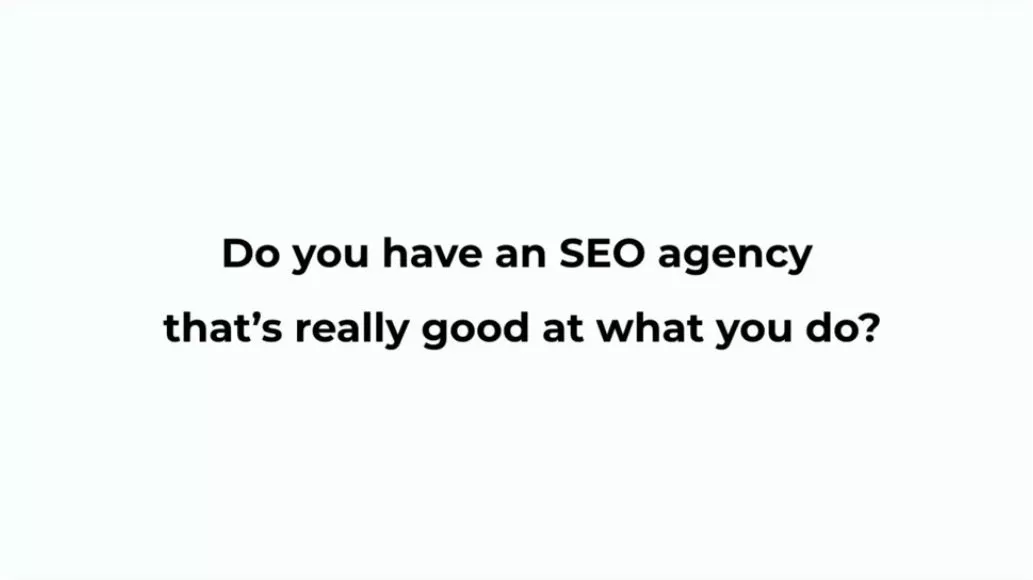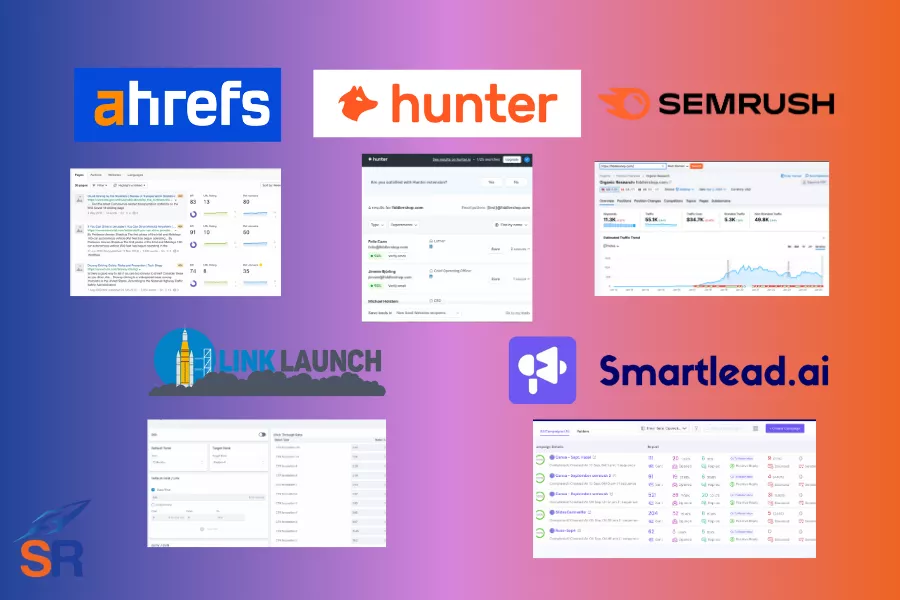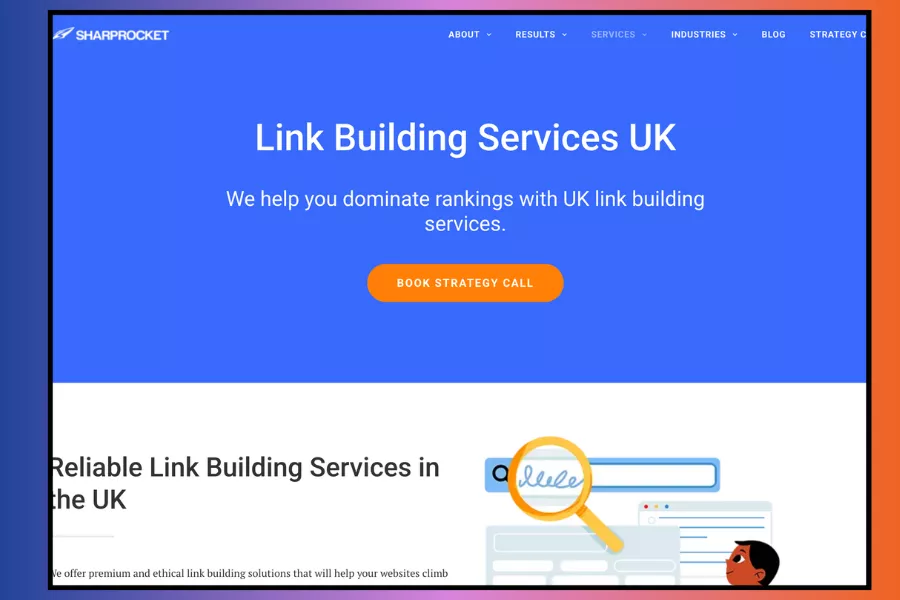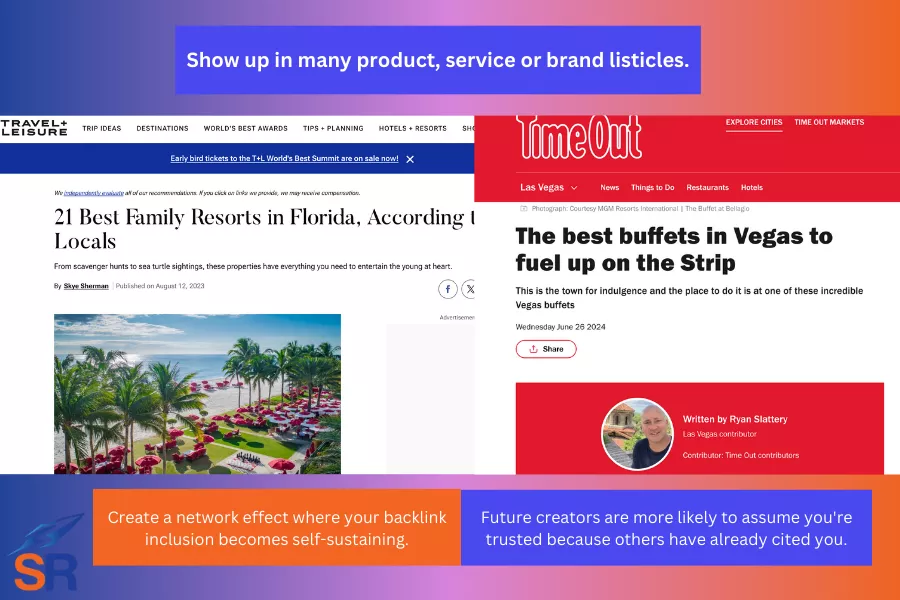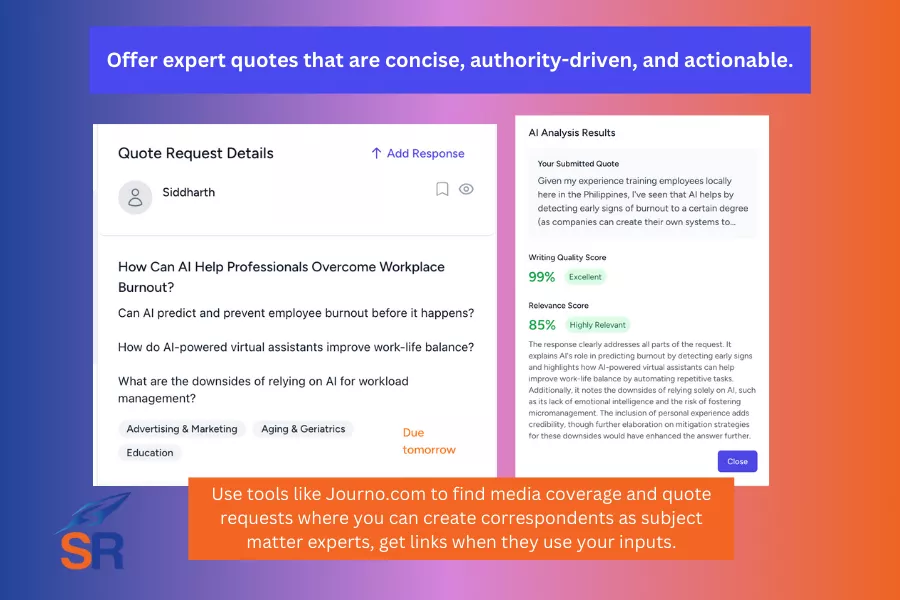Link building outreach comprises most of the work we do in our link building agency. We still find it effective in landing link opportunities that our clients’ competitors can’t easily replicate.
However, the resources, efforts, and time it takes for outreach accounts to grow and produce backlinks for clients are the bottleneck that most SEO specialists and agencies find challenging to overcome.
Links should be a byproduct of helping people achieve their goals: visibility, rankings, and promotion of their offers. It means helping people. The offer, approach, and objective may change, but the primary purpose of link building remains the same: adding value.
As the typical “guest post” pitch no longer works, it’s time to find new angles and innovative ways to increase the value of your link building outreach campaigns.
Contents
ToggleValue-Driven Link Building Outreach Tips
In this guide, I’ll show you unique outreach angles we’ve tested that are way more effective than requesting straight-up links.
1. Brevity in Initial Pitch
The first email in link building outreach sets the tone. One of the most effective tactics is keeping initial messages short. There are a few advantages to this.

Long, overly detailed pitches create fiction and mental fatigue for busy publishers. Asking too much of the reader too early increases their resistance towards your pitch. When you open your pitch with a long email, you assume the recipient is willing to invest time in something they haven’t asked for (reality: most won’t).
Instead, keep your opening message tight and to the point.
Why brevity works in outreach:
- Leverage skimming: Content publishers or those in editorial roles scan emails fast, so short messages are easier to process this way.
- Increase response rate: A clear, focused ask is more likely to get a reply.
- Maximizes outreach time: You avoid spending too much effort on unresponsive contacts.
Brevity in link-building outreach is efficient, as it tests interest first. If they reply, you can then follow up with more detailed or tailored information.
In value-driven outreach, earning attention comes before earning a link.
2. Educate Publishers
Truly helpful content on the web educates. It is also why people link to pages in the first place: they find something useful that solves their problems or addresses their concerns.
In link building outreach, the same mindset can be applied to help people get more visibility.
One of the best types of linkers is legit brands and business owners. Google sees their websites as credible and more likely to be searched by its target users (branded and non-branded searches). As such, getting links from their business sites has higher link value compared to niche bloggers who don’t have their built-in brand power.
In value-driven link outreach, education becomes your edge. Instead of requesting straight-up links, you can explain how reworking their current content that’s been declining in traffic can be optimized for search and recover their traffic.
The plain reason is that most legit small brands aren’t really knowledgeable about SEO. So sharing what you offer with them helps them gain more visibility and potential inquiries from ranking commercial keywords.
Use simple, non-technical explanations. Frame your “content improvements” angle as a favor to them, adding value to the conversations.
By actually giving them a reason to link, which is grounded in practical SEO benefit, you shift from a random stranger asking for a backlink to a helpful expert improving their content.
3. Content Refresh and Upgrade
Outreach is more effective when your offer improves what already exists.
Many websites have old blog posts, how-to guides, or listicles that still rank, but haven’t been updated in months or years (which could position these pages higher in Google’s SERPs once re-optimized). That’s where content refresh outreach comes in.
Instead of pitching your link as just another resource, position it as a content upgrade (something that helps improve the page’s quality, depth, and accuracy).
The outreach angle you’re pursuing for this is the fresh update, that search engines reward and have been using as a ranking factor for years, to rank websites producing new, helpful content for their audience.
A few content refreshes or upgrades you can offer:
- New stats or data to replace outdated ones. It is also a good way to link to your larger data-driven content if it’s thematically relevant.
- Missing section that covers a recent development. By getting immersed in the industry, you’ll get updated with what’s happening (more on this later).
- Visual (chart, infographic, flowchart) to enrich the reader’s experience
- Deep guide that supports or extends an existing point.
Do the work for them. Rewrite the content with internal links to their site’s other relevant pages (helping them get more visits on other content pieces).
» Want to take your outreach beyond templates? Explore advanced link building strategies in SEO that focus on relevance, value, and long-term results.
4. Be Updated with Industry Happenings
Immersion (as Jason Acidre coined it) is a strong factor differentiating your email outreach pitches from others.
Given that most SEO specialists and publishers will try to persuade blogs with generic topics. It would be an advantage if you knew the industry well and showed them what they’re missing in the content. It adds more value to their audience and helps them differentiate their brand in the industry.

Create a swipe file of the best content publishers in your space. You can automate getting the latest trends, tips, and news by subscribing to their newsletters.
Here are a couple of ways to stay informed in your industry (even if you’re not a subject matter expert):
- Be your own brand ambassador. Use your own experience if you’re pitching for your brand. Get insights from customers’ questions, sales feedback, and product updates (you know your business better than anyone else).
- Talk to people who know the space. If you’re doing link building outreach for clients (or other teams), interview in-house experts, or sit in on internal training onboarding calls (just do whatever you can to get a real look at what’s happening).
- Use actual information sources. Follow niche communities, LinkedIn creators, or industry Slack groups.
Once immersed in the industry, you can bring the knowledge into outreach.
The best thing about this approach is that when you reach out to publishers, most website owners won’t spot content gaps unless they’re fully involved in the topic.
This way, you can have so many outreach angles, including:
- Suggest updates to old posts that mention outdated tools or methods (share what tools have been highly reviewed in the industry).
- Recommended new angles based on emerging trends (rework their content)
- Offer data-backed resources based on recent studies.
Be like a consultant when pitching publishers, especially for new sites in the industry. You can help them by exploring new approaches to their content library.
5. Product Comparison Add-on
For eCommerce link building campaigns, this is one of the most high-impact link building outreach angles.
Given that getting links from posts that attract people who are actively searching, comparing, and making purchase decisions (i.e., Top X tools/products), especially those that rank well on Google’s SERPs.
This outreach angle works because most round-up-style articles don’t stay static. Publishers often (or want to) update them regularly, as they have the SEO benefit of driving consistent search traffic via rankings.
Help them with:
- Filling a gap in their current product listicle content.
- Adding new angles (e.g., best for beginners, best eco-friendly option)
- Reflects an emerging trend (e.g., AI features, sustainability, portability)
If your product has a unique POV, getting link placements from straight-up link requests would be easier. Provide more context on your product’s unique value, which is suitable enough to be included in the list.
Create a list of product listicles. You can start by reverse engineering pages linked to your competitors’ products (avoid the ones linked to big retailers or brands, as their websites naturally get links in the first place).
Find product list pages that are:
- Already ranking on page 1 or 2 for “best product” or “top product”.
- Recently updated (check the date) or actively maintained (see “Last Updated”).
- Missing your product or similar alternatives that your product improves on.
When doing link outreach using this angle, make your pitch stand out by:
- Positioning your product clearly (i.e. we’re the best for XYZ feature”).
- Frame it to benefit their content (i.e.,” including us helps cover a broader segment of your readers”).
- Make it easy for them to include your product (provide a quick smmary or suggested blurb they can copy and paste).
It’s unlikely that your product beats others on everything. So, frame your angle to be best on a specific product feature or target customers. This would make specific relevance helpful to publishers trying to serve different audience segments.
» Looking for tools to streamline your outreach? Check out the best link building tools for SEO to scale and manage your campaigns efficiently.
6. Reverse Outreach
Outreach isn’t enough to land more quality link placements. Especially if you’re in a narrow niche, with limited publishers you can reach out to.
The best way is actually to create link opportunities yourself. That’s where reverse outreach comes in.
Reverse outreach is a link building strategy where publishers initiate contact with you, not the other way around.
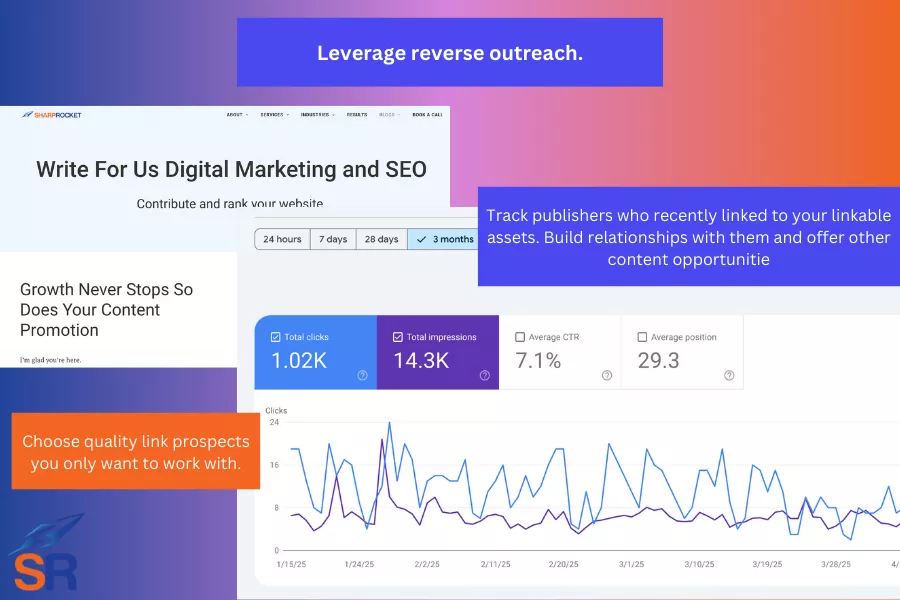
By ranking for keywords at the stage where they’re writing their content or looking for references to add to their page, you would be found among the top-ranking pages in Google’s SERPs.
The upside with reverse outreach is that you can control the value exchange, where you can:
- Choose quality link prospects you only want to work with.
- Have low resistance to link placement (leverage their desire for linking or content collaboration)
- Reduce outreach fatigue as you invest more in assets that do the prospecting for you.
- Scalable and sustainable (as it ranks and gets more visibility, the content can attract more passive link opportunities).
Create content that other people would cite as their resources, including:
- Original data or studies
- Free tools or templates
- In-depth evergreen guides
- “Write for us” or “Partner with us” pages
Another tip is to track publishers who recently linked to your linkable assets. Build relationships with them and offer other content opportunities, like collaborating on content, as both parties will certainly benefit from exposure.
» Need assets worth linking to? Learn how to create linkable assets that add real value and attract links naturally.
7. Stats-Driven Outreach
Data is one of the best reasons to update content, as it strengthens the page’s credibility, makes it more current, and improves its chances of ranking higher in search results.
Stats add value to link building outreach, given that it or it has:
- Content freshness: Offering stats helps them refresh content without doing the research themselves.
- Fills missing context: You help them turn vague claims into precise, backed-up insights by inserting real numbers.
- Authoritativeness (E-E-A-T approach): When they cite credible sources or original data, it makes the publisher’s page more authoritative.
- Do the work for them: Make it easy by writing the actual update or paragraph they can copy-paste with zero edits (offer that help upfront).
Don’t have stats? You can curate stats using public government data and third-party data sources.
» Looking to get featured on real blogs? Check out our blogger outreach services that connect your brand with trusted publishers in your niche.
Written By
Venchito Tampon
CEO and Co-Founder at SharpRocket, a link building agency. With a decade of experience, Venchito has a proven track record of leading hundreds of successful SEO (link builidng) campaigns across competitive industries like finance, B2B, legal, and SaaS. His expert advice as a link building expert has been featured in renowned publications such as Semrush, Ahrefs, Huffington Post and Forbes. He is also an international SEO spoken and has delivered talks in SEO Zraz, Asia Pacific Affiliate Summit in Singapore, and Search Marketing Summit in Sydney, Australia. Check out his other business - Hills & Valleys Cafe.
Reviewed By

Sef Gojo Cruz
COO at SharpRocket, overseeing end-to-end operations, from crafting link building strategies to leading high-performing teams. Previously led SEO initiatives at Workhouse, a digital agency in Australia, and Keymedia, a real estate media company based in New Zealand.
How our LINK BUILDING AGENCY in UK builds 250 links/mo consistently using Predictable Link Building Methodology™…
- Using a SIMPLE and PROVEN system
- Using a SCALABLE strategy
- No private blog networks
- No creepy outreach emails
